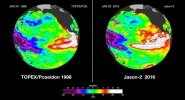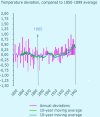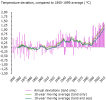Hey guys. Since the book is currently being translated into german, I thought it might be a good idea to create a fast accessible and changeable data base while going trough it, for the important data in the book, so that we can publish the book with the most up to date data/graphs.
I'll share it here, since it is also translated into other languages right now and they could use it as well. Of course if you bring the important data in the book up to the current date, you need to change the text in those passages accordingly as well. It is not that much work, even though it sounds like it.
I just think it would be nice that german readers will get the newest and cutting edge data when the the book gets published. I also decided to add a bit of data here and there, while translating, because since the book was written more has been discovered, I hope that this is alright for you Pierre? If not, I can also leave it as it is... I just think it would be good that we have the data and the text in the book as much up to date as possible when it gets published.
So with this data sheet, you can quickly bring the important data from the book up to date, plus you can quickly create the appropriate graphs for the book:
https://docs.google.com/spreadsheets/d/1VbfoSiEr2Ou8dKl_OoPI5fPvV_upcwIbtJlpUuVYDXk/edit?usp=sharing
Notice that in some tables I already included a rough graph. I'm not an expert in creating graphs, so maybe somebody else can create them there correctly?
Also in regards to the NASA Budget, I couldn't really find coherent data from 2007 until 2015 yet. The thing is, that NASA has those numbers in three different status: (Request/Actual/Enacted) and I can't find reliably all the data for one of those status sections. I guess if we could find all the "enacted" data from 2007 until 2015, that would be nice... The problem is that NASA did not put out the Data coherently from 2007 until 2015, so in one year you can find only one status section and in the other year the other one. Maybe somebody can help out with that?
When the new data is found, the table has just to be updated...
If somebody wants to have direct access to the data above, for creating up to date data for the book, and/or for helping out to create the graphs, just send me a PM and I'll enable you to access it and work on it....
I'll share it here, since it is also translated into other languages right now and they could use it as well. Of course if you bring the important data in the book up to the current date, you need to change the text in those passages accordingly as well. It is not that much work, even though it sounds like it.
I just think it would be nice that german readers will get the newest and cutting edge data when the the book gets published. I also decided to add a bit of data here and there, while translating, because since the book was written more has been discovered, I hope that this is alright for you Pierre? If not, I can also leave it as it is... I just think it would be good that we have the data and the text in the book as much up to date as possible when it gets published.
So with this data sheet, you can quickly bring the important data from the book up to date, plus you can quickly create the appropriate graphs for the book:
https://docs.google.com/spreadsheets/d/1VbfoSiEr2Ou8dKl_OoPI5fPvV_upcwIbtJlpUuVYDXk/edit?usp=sharing
Notice that in some tables I already included a rough graph. I'm not an expert in creating graphs, so maybe somebody else can create them there correctly?
Also in regards to the NASA Budget, I couldn't really find coherent data from 2007 until 2015 yet. The thing is, that NASA has those numbers in three different status: (Request/Actual/Enacted) and I can't find reliably all the data for one of those status sections. I guess if we could find all the "enacted" data from 2007 until 2015, that would be nice... The problem is that NASA did not put out the Data coherently from 2007 until 2015, so in one year you can find only one status section and in the other year the other one. Maybe somebody can help out with that?
When the new data is found, the table has just to be updated...
If somebody wants to have direct access to the data above, for creating up to date data for the book, and/or for helping out to create the graphs, just send me a PM and I'll enable you to access it and work on it....



